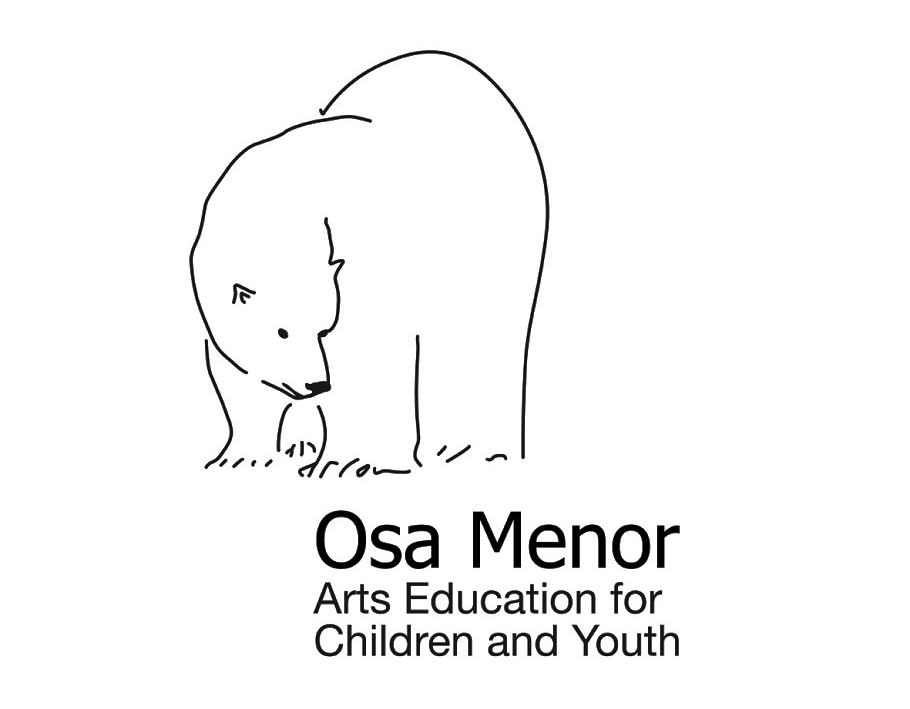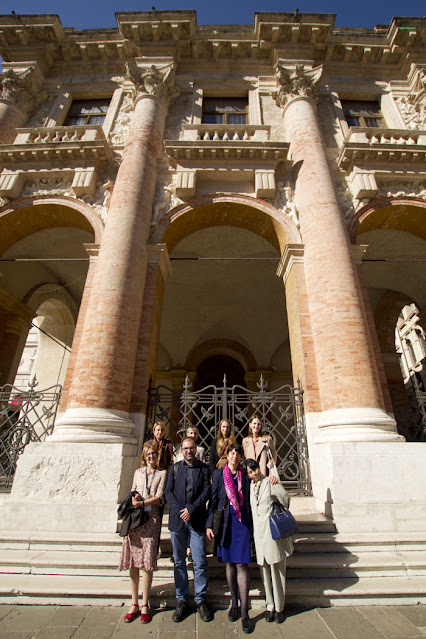October 7th, 2022_ What adults don't know about architecture,study day at Palladio Museum, Vicenza, Italy.
The Palladio Museum in Vicenza -situated in Palazzo Barbarano by Palladio- celebrated its tenth anniversary with two study days. September 30 was dedicated to the current concept of architecture museums, inviting museum directors from various countries. October 7 was dedicated to architecture, childhood and education, specifically, to the value of architecture as a component of culture where childhood grows, spaces as physical and symbolic places created by all, inherited, lived today, transformed with every gesture and action. Children learn their responsibilities in society through the learning of architecture, also as an inherited heritage that must be preserved and transmitted to future generations.
The guests from various countries showed some of their projects on architecture education for children, reflecting on the teaching of architectural, spatial, landscape heritage...
> Guido Beltramini, director of the CISA / Palladio Museum, welcomed this unique day where children and young people are considered protagonists in architecture museums.
> Ilaria Abbondandolo, Senior Curator at CISA and Head of Education at the Palladio Museum, outlined the pedagogical framework in which her exemplary institution works: well-being, inclusion, democracy. Andrea Palladio and the Italian 16th century still give us clues about the direction to follow.
> Luca Mori, Italian philosopher, has been working for years on the concept of Utopia with childhood and youth: what would a new society on an imaginary island be like? How are these utopian behaviors and values transferred to space? Luca has published several books where he explains these important experiences to understand that all space is the projection of concrete social constructions.
> Angela Million, German urban planner and great connoisseur of participatory processes with youth, reviewed strategies and tactics for youth to understand, enjoy and take ownership of public spaces and the architecture of her town. Good urban planning helps the inclusion of all and the synergy between institutions to achieve the best possible education at all times.
> Aynur Ciftçi, Turkish architect specializing in architectural heritage, explained one of her pedagogical projects where childhood is immersed in the richness and sophistication of Ottoman and Turkish spatial culture in general.
> Olimpia Niglio, Italian architect specializing in heritage, reminded us how deeply rooted the architectural symbol shared by the community is, the strength of inherited spaces to unite the community since childhood. Her link with international Heritage organizations projects her pedagogical work in the long term.
> Marta Morelli, head of education at MAXXI in Rome, showed some of the projects they have carried out with children, youth and families visiting the museum or with schools in Rome. Architecture understood as a balance between yesterday, today and tomorrow, the balance between the "reading of space" and critical expression, concrete action from a conceptual understanding... are characteristics of MAXXI's pedagogical activity.
> Sophie Draper, head of education at the Royal Institute of British Architects (RIBA), took us into the pedagogical work of her institution with a long tradition and a wide variety of strategies, such as introducing architects into schools to work with students alongside their teachers. The language of architecture and its heritage value go hand in hand in the construction of citizen identity.
> Jorge Raedó, professor of art and architecture for children, reflected on the importance of imagination and beauty in the integration of citizens in fair societies, in the education of children to strengthen their natural curiosity to discover and build the world. To achieve this, childhood has to master three basic incompetences: Utopia, Nature and Poetry.
It was an important Italian day for the education of architecture for children all over the world. The CISA/Palladio Museum is an institution of international prestige. When he focuses his attention on childhood, he encourages those of us who dedicate ourselves to it.
Text from the Palladio Museum website:
Providing the opportunity for children and young people to learn about architecture is one of the Palladio Museum's principal aims. This means presenting Palladio's legacy as part of a collective identity, as a tool for social cohesion, and as a stimulus to thinking about the past and understanding the present.
The central theme in this second study day is education and it will be approached from two different points of view: first, by highlighting the importance of the educational function of museums in general (as recommended, for example, by ICOM Italy, 2013) and, second, by analysing the specific role of exploring architecture as a means to well-being, inclusion and democracy.
The creators of some of the best architecture education programmes in Italy, Germany, England, Turkey and Colombia will sit round the same table to exchange views and share experiences, projects and results.
The study day is addressed to all, including museum professionals, education administrators, architects, university students, teachers from schools of all levels, and members of associations and community groups both locally and nationally.
The language of the study day is English.
The study day has been funded by a grant from the Ministry of Culture Directorate-General for Education, Research and Cultural Institutes.
Programme
10:00 am - 12:30 pm | Session 1
Ilaria Abbondandolo (Palladio Museum, Vicenza), Introduction: Architecture Education at the Palladio Museum
Luca Mori (Università di Pisa), Architecture and Cities in Children’s Utopias
Angela Million (Technischen Universität Berlin), Learning Processes and Places: How, When and Where Do Children Learn about Architecture?
Aynur Ciftçi (Yildiz Technical University - Faculty of Architecture, Department of Architecture, Istanbul), The Impact of Architectural Heritage on Children’s Cultural Identity
2:30 pm - 5:00 pm | Session 2
Olimpia Niglio (Università di Pavia), After Mondiacult. Culture’s Compass: Deeply-Rooted Education and Sustainable Future
Marta Morelli (MAXXI, Rome), Children, Youth and Contemporary Architecture. MAXXI's Learning and Interpreting Methodologies
Sophie Draper (Royal Institute of British Architects, London), Architecture for Everyone: Fixing a Broken System
Jorge Raedó (Osa Menor, educación de arte para infancia y juventud, Bogotà), Utopia, Poetry, Nature: Architecture Education for Children.
Guido Beltramini, director of the CISA / Palladio Museum
Ilaria Abbondandolo, Senior Curator at CISA and Head of Education at the Palladio Museum
Luca Mori, Italian philosopher,
The hall in Palazzo Barbarano with paintings by Tiepolo was ready for the streaming of the lectures.
Angela Million, German urban planner and great connoisseur of participatory processes with youth
Aynur Ciftçi, Turkish architect specializing in architectural heritage
Olimpia Niglio, Italian architect specializing in heritage.
Marta Morelli, head of education at MAXXI in Rome.
Sophie Draper, head of education at the Royal Institute of British Architects (RIBA),
Left to right, front to back: Ilaria Abbondandolo (Palladio Museum), Luca Mori (Pisa University), Olimpia Niglio (Pavia University) , Mirako Muramatsu (Tokyo University), Aynur Ciftçi (Yildiz Technical University), Marta Morelli (MAXXI), Sophie Draper (RIBA), Silvia Fogato (Palladio Museum) in front of Loggia del Capitaniato by Palladio.
Photos by Jorge Raedó. (Except the photo where he appears, made by Luca Mori)











